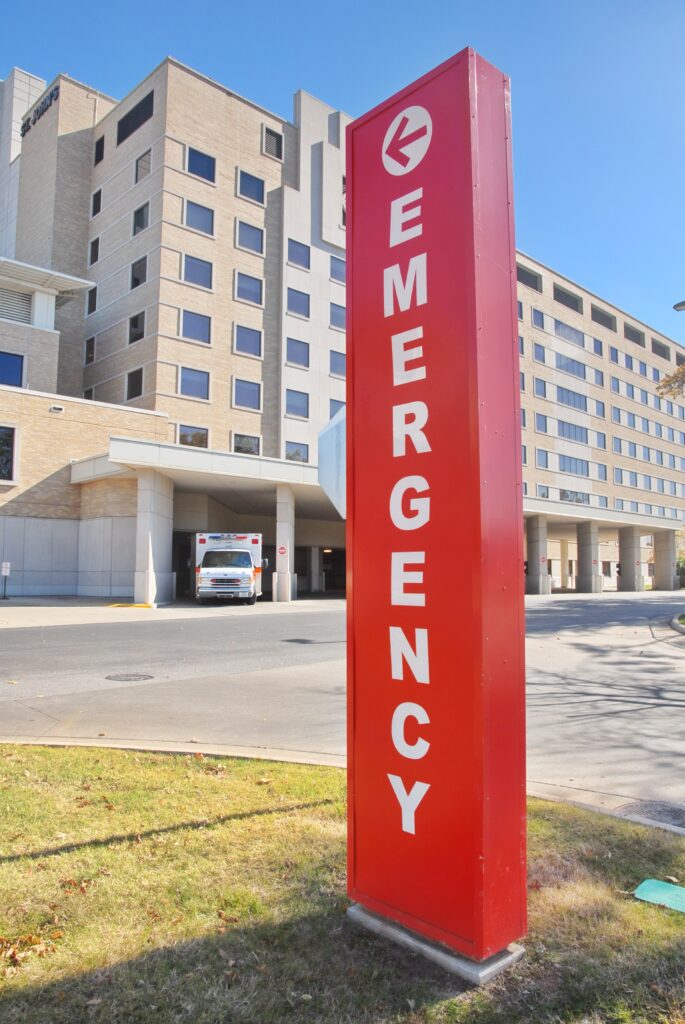May is National Stroke Awareness month so we felt it was a good time to discuss the importance of recognizing symptoms and getting medical assistance within the Golden Hour of treatment. Every year, over 795,000 people have a stroke. A stroke is a serious medical emergency that can lead to death or permanent disabilities. The good news is that many strokes can be much less severe if you know the warning signs and learn to act F.A.S.T.
Three Types of Strokes:
- Ischemic-blood flow is cut off to an area of your brain possibly by a blood clot that is lodged. This is the most common type of stroke.
- Hemorrhagic-not as common and is caused by bleeding into the brain. Artery in the brain leaks blood or ruptures. Pressure leads to damage. High blood pressure and aneurysms Subarachnoid (between brain and overlying tissue and most common Intracerebral artery bursts. It is very important that your blood pressure is under control.
- T.I.A. Trans ischemic attack- is also cause a mini stroke and may be a warning sign that a larger stroke may be soon. The symptoms are temporary and resolve often by the time you get to the hospital. You must be treated the same way until it is determined that you are not having an acute stroke. Blockage usually lasts about 5 minutes. In beginning can’t tell if it is a full stroke or TIA must treat the same when getting EMS help. Warning signs. More than a third of people who have a TIA and don’t get treatment have a major stroke within 1 year. As many as 10% to 15% of people will have a major stroke within 3 months of a TIA

Learning to use the F.A.S.T. This is the acronym that is very helpful in determining the signs of a stroke and to encourage you to act FAST! Practice this now and then so you know what to expect if stroke symptoms do occur.
F-Facial Droop. Ask the person to smile. Is one side of their face drooping?
A-Arms. Ask the person to hold their arms out in front of them. Is one arm drifting downward?
S-Speech. Ask the person to say a simple sentence. Are they having trouble getting the words out? Are they slurring their words?
T-Time. Time is of the essence. Call 911right away.
We encourage you to watch our video on Stroke where we interview a Fire Captain and Paramedic regarding pre-hospital treatment for a stroke. We go into a bit more detail on treatment, medications, and therapy.
EMS-Emergency Medical Services: What to expect when you call 911
- Make sure you can relay to the EMS crew what time the symptoms started
- Have a list of your medications ready to take to the hospital
- EMS will be in a hurry to get you to the hospital and will be performing many of their tasks once you are loaded into the rescue squad.
- Be ready to go.
The Golden Hour: This is the window of opportunity to determine if you are having a stroke and what type of treatment will be provided. Outcomes and recovery are greatly improved when the stroke is determined within an hour of symptoms first beginning. Please do not wait to see if the symptoms will subside or go away. Now is the time to call 911 and get to the hospital so your care can begin to reduce the effects of your stroke.

What Happens When You Get to the Hospital?
The Golden hour begins, and it is very important that the EMS and hospital ER staff or mobile stroke unit staff are aware of the time the symptoms started. You will get blood work and review medications and most importantly will get a CT scan of the Head to look for signs of a stroke. They are also looking to determine the type of stroke, so they know how to treat you. If you are having an Ischemic stroke possibly due to a blood clot blocking blood flow to an area of your brain, they may be able to use the clot busting medication in your I.V. to break up the clot and stop the continuation of the stroke. This will often lead to less symptoms and quicker recovery.
If you are having a hemorrhagic stroke, they cannot give you the clot busting medication due to the fact it could cause more bleeding into your brain. The treatment plan for this type of stroke would be different.
Aftercare following a stroke will be different for each person based on what symptoms are left after having a stroke. You may need home health care for therapy and nursing until you are strong enough to go to the outpatient setting. You may qualify to go to an acute rehab hospital for intense rehab services of up to 5 hours per day of therapy. You may go to an short term rehab facility such as a nursing home to complete the therapy you started in the hospital and hopefully recover enough to go home. Some strokes are severe enough to be debilitating and full recovery may not occur.
Nursing care following a stoke may be for education on new medications, assessing your blood pressure, education on preventing further strokes. Your discharge instructions from the doctor at the hospital will help determine what services you will need.

Your therapy may include Speech Therapy for swallowing difficulties or trouble with your speech. Occupational Therapy for fine motor skills such as eating and drinking, bathing, dressing yourself, and helping with your thought patterns and cognition. Physical therapy will work on your large motor skills such as walking, climbing stairs, and balance issues. All the therapies will work together to put a plan in place to reach your rehab goals.
Strokes can happen to anyone at any time, so it’s important to be aware of the warning signs and know what to do if you or someone you know has a stroke. This month, take some time to learn about strokes and share that information with your friends and loved ones. And if you want more information on how to help someone who is having a stroke, click here to get our free guide on identifying needs and resources for parents. Make sure you visit our resources and print out a PDF on the F.A.S.T. scale provided below.
For further health information as well as tips and strategies to keep your elder parent or spouse safe consider getting on our “Keep Me in the Know List” and we will give you our PDF on 11 Signs Your Aging Parent or Spouse May Need Help in the Home. You can grab that HERE.
Thanks for taking the time to stop by. Please check out our resource listing for healthcare services. We will continue to bring you education, tips and strategies to meet your healthcare goals or the goals of someone you care for.
Take care and we will see you back here soon,
Pam Dunwald, R.N.
Patient Advocate Match
Matching the Right Resources for the Right Reasons
Resources:
https://www.stroke.org/-/media/Stroke-Files/About-Stroke/Stroke-in-CHildren/Stroke-Heroes-Toolkit–FINAL–Digital.pdf https://www.stroke.org/en/help-and-support/resource-library/fast-materials


